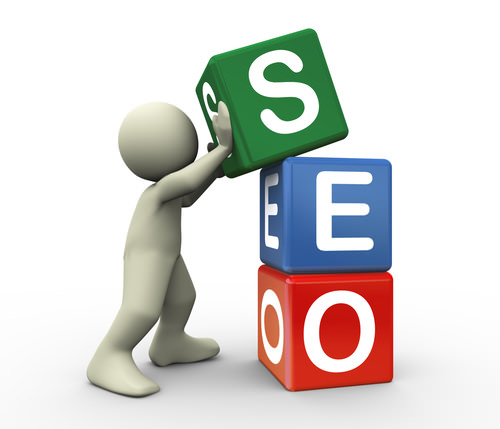A Quick Search Engine Marketing Strategy Framework for Beginners

As times change and people continue to embrace technology, more and more digital strategies are being introduced to help businesses find customers online. As a small business owner or a beginner in the digital marketing space, emerging strategies can be overwhelming and intimidating. However, you have to embrace them if you want to gain a competitive edge in the already flooded digital space.
One of the marketing strategies that have gained traction over the past decade is search engine marketing. When it was first introduced, SEM was used to refer to both organic and paid traffic. However, today, it is used to refer to paid search advertising. Search engine marketing is a digital marketing strategy that is used to increase the visibility of websites on SERPs and direct paid traffic to websites.
As a beginner in digital marketing, you may be wondering how to come up with an effective SEM marketing strategy framework for your business. This post will shed light into this technique and show you the basic things that you need to set up a successful SEM strategy.
Difference between SEO and SEM
Before we get into SEM strategy framework, it is essential to understand that SEM and SEO are two different strategies. As aforementioned, they were previously used interchangeably to refer to the same thing. However, SEM is a bit narrower than SEO.
Search engine optimization refers to a series of methodologies that are used to improve a site’s ranking on search result pages. The aim of SEO is to drive organic traffic to a website, and it involves content creation, keyword research, link building, and mobile optimization among other techniques.
On the other hand, SEM is used to direct paid traffic to a site. If you have visited Google or Bing search pages, you may have seen some ads on top of the search results. These are what SEM is essentially about. When someone clicks on the ads, they are directed to the said website’s landing pages. Most marketers today buy ad space on Google Ads (formerly Google AdWords). However, Yahoo and Bing also provide for paid advertising space as well.
Why Paid Traffic?
Why do you need paid traffic for your website? Can’t you work on SEO and direct organic traffic to your website?
The truth is most markers utilize both SEO and SEM in their marketing strategies. Paid search is incredibly helpful to business, and if used correctly, it can help boost your SEO strategy and increase conversion rates.
Below are some of the benefits of paid search advertising:
- Paid Search is Unobtrusive: Unlike the annoying ads that pop up on websites, paid ads only appear on search engine result pages (SERPs). Therefore, users are more likely to pay attention to them and not feel like the ads are being shoved down their throats.
- Paid Search Ads Are Resistant to Ad Block: If someone uses software to block ads, putting paid ads on your site will be useless. However, those that appear on search engines cannot be blocked by browsers or ad blocking software.
- Paid Search is a Remedy for Poor Organic Traffic: If your site isn’t doing well even after implementing SEO, it may be time to explore paid traffic. Once it converts, paid traffic can help boost your site’s visibility.
SEM Strategy Framework
Now that you know what SEM is and why it is important for your business, the next thing is to find a suitable framework. There are numerous SEM frameworks that businesses utilize today, and some can be overwhelming for beginners. Here are some of the simplest but effective concepts that you need to grasp to break through search engine marketing.
1. Keyword Research
Keywords are essential elements in a successful SEM strategy. They represent the search terms that users feed on search engines when looking for a product or information. If your ads don’t bear keywords that are similar or related to the users’ search terms, your ads will not display on search engine results pages. Therefore, before choosing the keywords to use in your ad campaign, you should carry out keyword research.
There are various free and premium tools that can help you to successively carry out keyword research and come up with phrases that are in line with the customer’s intent. These tools help you to identify terms that are relevant to your business and which customers are likely to use when searching online for products or services.
SEO experts, Minneapolis Premier SEO Ninjas have found that long tail keywords tend to perform better in SEM. That’s because they are more specific and have less competition than short keywords. Therefore, as you utilize keyword research tools, pay attention to long tail keywords that are related to your business and leverage them for your ad campaigns.
2. Display vs. Text Ads
After choosing your keywords based on user intent, another basic concept you need to understand is the difference between display ads and text ads. Display ads, also called banner ads, are adverts that are in the form of a photo. When one clicks on the photo, they are redirected to the website’s landing page. These ads seem to do well when targeting customers who are not buying something new.
On the other hand, text ads are the most popular in paid search. These comprise of keywords which are related to the user’s search terms. Again, when someone clicks on the ad, they are taken to the site’s landing page. Text ads are affordable and incredibly effective, but they heavily rely on good keyword research.
Now, Google Ads offers both display and text ads together with highly targeted keywords. The ROI from using Google Ads tends to be higher than if you used Yahoo or Bing. If you are just starting out, it is best to go with text ads as they are cheaper and more effective. As your business grows, you can combine both display and text ads to get the best of both worlds.
3. Performance Indicators
As with every other digital strategy, SEM requires monitoring as well. You won’t know whether your ads are bringing in paid traffic if you don’t carry out site analytics. Performance indicators are essential elements of this marketing strategy. Indicators such as click-through-rates (CTR), Pay-per-click (PPC), and conversion rates are particularly useful.
CTR measures the ratio of users who see your ad and actually click it. PPC is a measurement that determines the price paid for each click on an advert. High PPC shows that your ads are getting more clicks.
Finally, the conversion rate is the most important of all. After people click your ads, you need to know that they bought your product, subscribed to your mailing list, or took your desired CTA. You can determine this by measuring the conversion rates. If they are high, it means that your ads are working. If they are low, it means you need to optimize your campaigns.
Final Thoughts
Search engine marketing is a broad strategy that involves complex methodologies. However, as a beginner digital marketer, you only need to understand three things: how to carry out keyword research and come up with highly targeted search terms, how to choose the best ad forms (text ads), and how to measure your performance.
If you find that your ad campaigns aren’t working, go back to the drawing board, check your keywords, and make sure that they are in line with the customer’s search intent. Alternatively, you can always hire the experts to carry out professional SEM for you.




